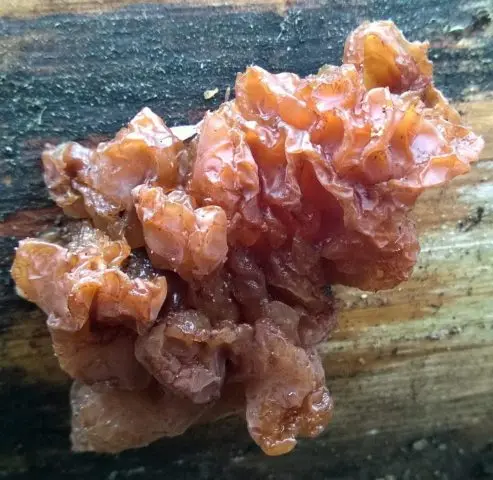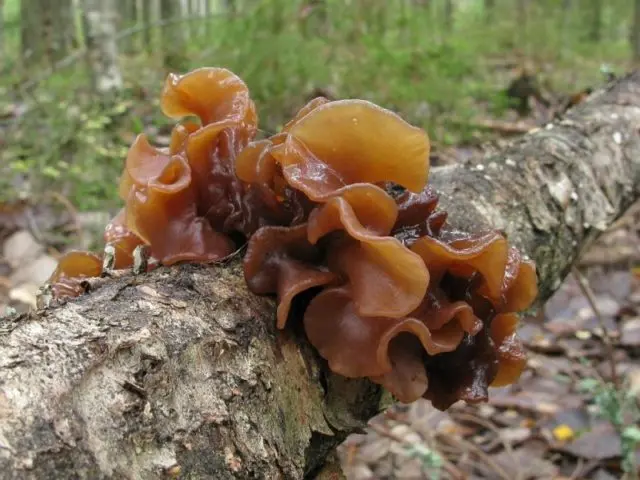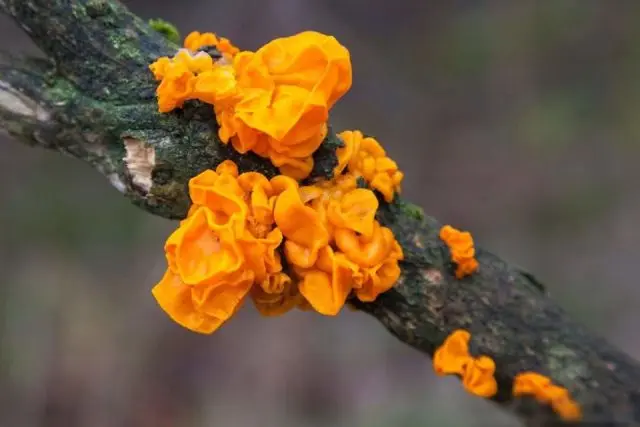Contents
Sugar Exsidia is an inedible species of the Exsidia family. It grows on dry wood, in regions with a temperate climate. In coniferous forests, it can be found from early spring until the first frost.
What does sugar exsidia look like?
Young specimens look like small resinous drops, which, as they grow older, grow and take on an irregular, angular shape. The wrinkled surface is shiny, amber, light brown or caramel in color.
In older representatives, the fruiting body darkens and becomes dark brown or black. The pulp is dense, jelly-like, withstands temperatures down to -5 ° C. During the thaw, recovery occurs and growth and development continues.

The spore-bearing layer is located over the entire surface, and during fruiting, the fungus takes on a dusty appearance. Reproduction occurs by microscopic, whitish spores.
Is the mushroom edible or not?
Due to the hard pulp and the lack of taste and smell, this representative of the gifts of the forest is not used in cooking, it is considered inedible.
Where and how to grow
Exidia sugar prefers to grow on dry coniferous wood. The species is widespread in regions with a temperate climate; it begins its life journey from early spring to late autumn. The fruiting body is not afraid of slight frosts, after warming it thaws and continues to grow and develop.
Twins and their differences
Exidia sugar, like all the inhabitants of the forest kingdom, has twins. These include:
- Trembling leafy – inedible specimen, reaches 20 cm or more. The surface is smooth, shiny, colored brown or dark orange, as it matures, the color darkens and may turn dark brown or black. The gelatinous pulp is elastic and dense, has no taste and smell.

- Orange – the surface is smooth, shiny, covered with watery lobes of bright orange color. The pulp is jelly-like, dense, odorless and tasteless. It grows from August to the end of October on dry hardwood. In European countries, this specimen is eaten, but for mushroom pickers the species is unknown and of little value.

Conclusion
Sugar Exsidia is an inedible species that prefers to grow on dry coniferous wood. The fungus begins growth and development from early spring and continues until late autumn. Because of the beautiful color and unusual shape, it is of interest to collectors.











